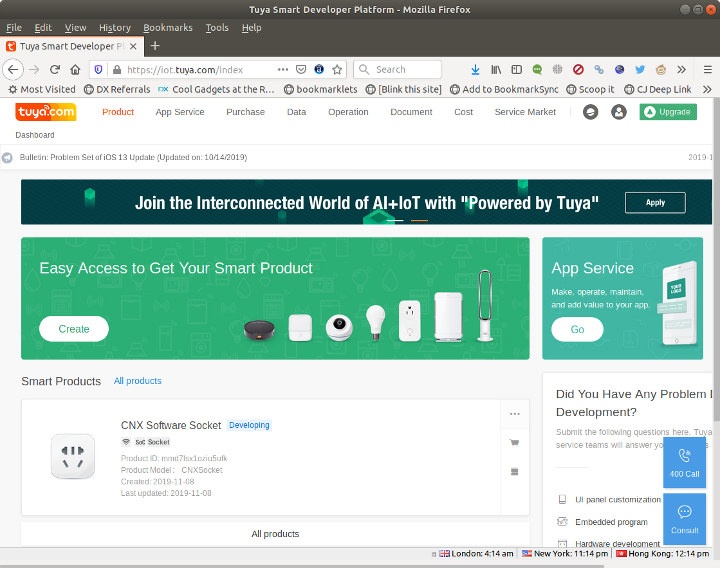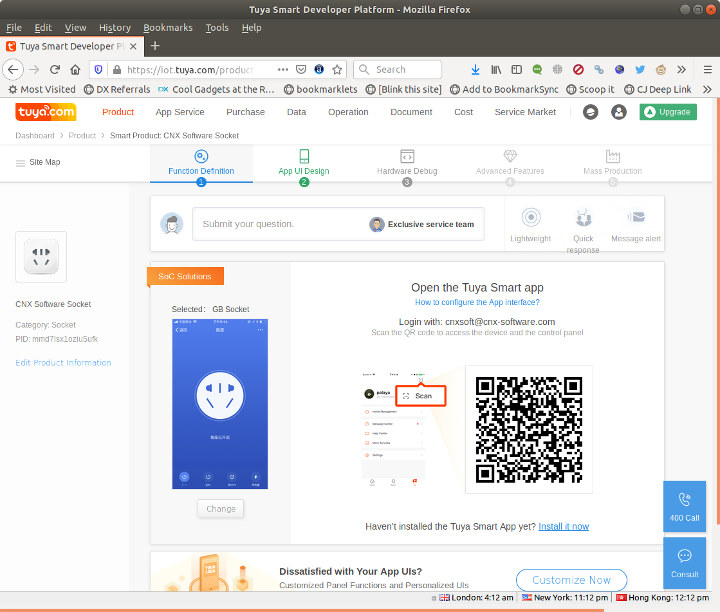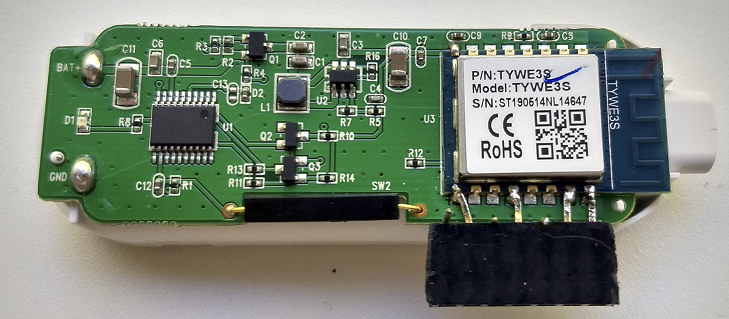I was recently informed about LSC Smart Connect 3 door sensor selling on Action discounter with over 600 stores across the Netherlands, Belgium, France, Germany, Luxembourg, Austria, and Poland.
The door sensor is based on ESP8266, and people have bought a few and flashed their own open source firmware converting the device into a multi-purpose sensor device with ESPNOW protocol that enables direct and low-power control of Espressif devices without the need of a router.
The module inside the door sensor is called TYWE3S, which one document on the FCC website refers to as “Tuya WiFi module” and further mentions “TYWE3S is a low-power consumption module with built-in Wi-Fi solution designed by Hangzhou Tuya Technology Corporation” that is based on ESP8266 WiSoC with 1MB flash, 50 kB RAM.
One person in the LetsControlIt forum thread linked above explains the stock firmware can be updated over-the-air via a Raspberry Pi 3/3+ board using a project named Tuya-Convert.
That looks fun already, but what really caught my eye is the first paragraph in the project description:
A Chinese company named Tuya offers a free-to-brand turnkey smart home solution to anyone. Using their offer is dead-simple, since everything can be done by clicking through the Tuya web page, from choosing your pre-designed products or pre-programmed wifi-modules (mostly ESP8266) to building your own app. In the end, this has resulted in as they claim over 11 000 devices ‘made’ by over 10 000 vendors using Tuyas firmware and cloud services.
That means you can easily create your own branded smart home solutions by simply going to Tuya website and clicking on the Platform login button to create an account.

You can choose from a list of smart sockets, smart lighting solutions, various sensors (like the door sensor discussed above), wearables, routers, and even home appliances such as air conditioners, washing machines, heaters or toasters.
I started small with a CNX Software branded WiFi smart socket, and after selecting hardware option the interface moves with the app design…

I stopped there, so sorry there won’t be any CNX Software branded devices, but we can see it’s 5-steps process with functions definition, app UI design, hardware debug, advanced features, and mass production.
The company also claims to offer “Military-grade AES and HTTPS WAN/LAN encryption”, but Michael Steigerwald, founder of the German IT security startup VTRUST, disproved the claim as the messages contain “canttouchthis” unencrypted password, at least that was the case in December 2018.
So if you ever wanted to launch your own brand, it looks to be an easy way to get started, but you may want to handle the firmware & software part on your own.
Thanks to Zoobab for the tip

Jean-Luc started CNX Software in 2010 as a part-time endeavor, before quitting his job as a software engineering manager, and starting to write daily news, and reviews full time later in 2011.
Support CNX Software! Donate via cryptocurrencies, become a Patron on Patreon, or purchase goods on Amazon or Aliexpress





